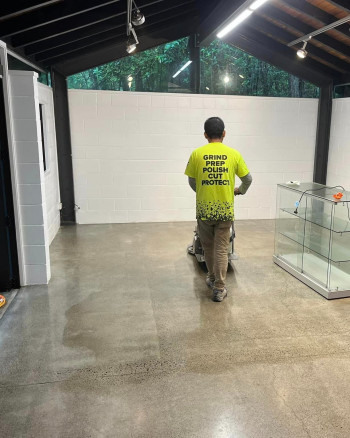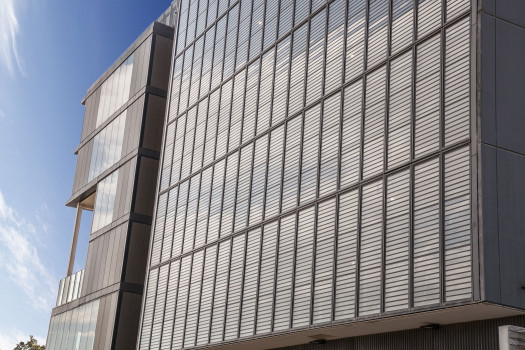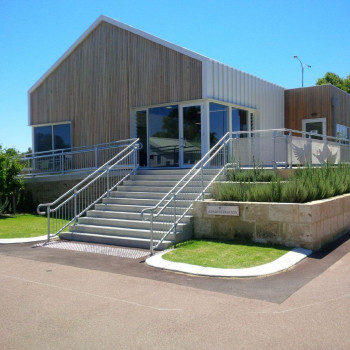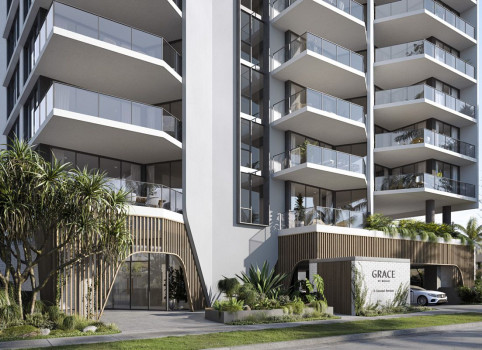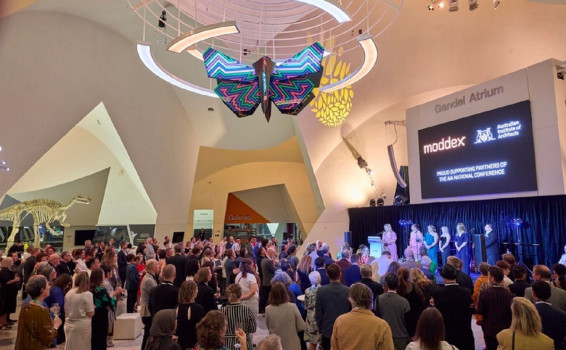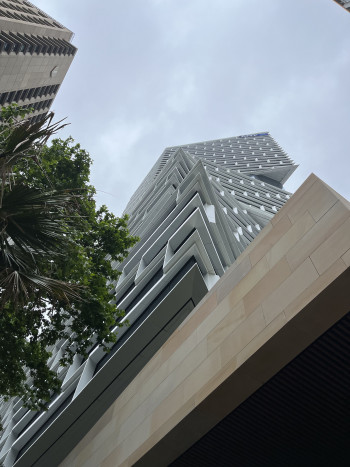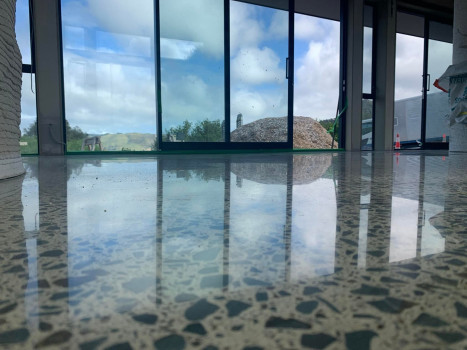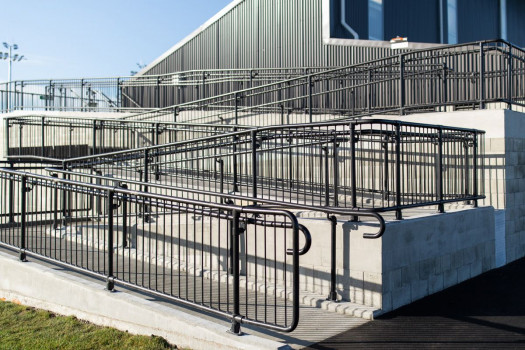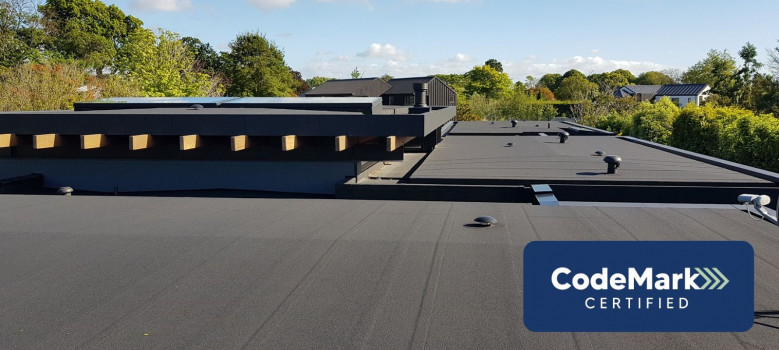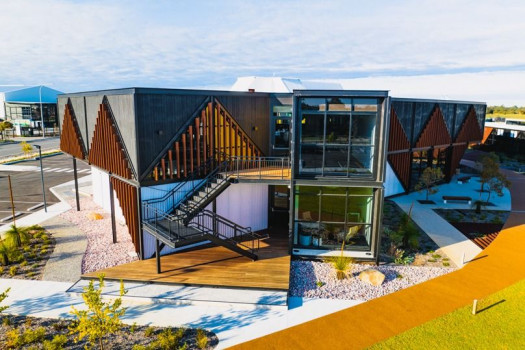236 results for "US" in Articles
PROJECT CASE STUDIES
11 MONTHS AGO
See the results for yourself with these before and after pictures.
PROJECT CASE STUDIES
11 MONTHS AGO
Absolutely gorgeous.
PROJECT
1 YEAR AGO
Nestled in the heart of Fitzroy, Victoria, the Wurun Senior Campus stands as a beacon of modern architectural ingenuity, winning the prestigious title of Best Secondary School at the esteemed 2022 Victorian School Awards.
NEWS
1 YEAR AGO
Handrails and balustrades, often seen as mere safety features, have evolved into significant architectural elements that offer both functional and aesthetic enhancement. In the dynamic world of architecture, the demand for innovative and functional design solutions is ever-growing.
NEWS
1 YEAR AGO
In the evolving landscape of construction, the emphasis on accessibility cannot be overstated. Modern projects demand solutions that not only meet today’s standards but also anticipate the needs of tomorrow.
NEWS
1 YEAR AGO
At Pliteq, sustainability is not just a commitment; it's our driving force.
NEWS
1 YEAR AGO
AS1428 has played a crucial role in shaping balustrade and handrail designs to provide accessibility and mobility for people with disabilities in Australia.
PROJECT
1 YEAR AGO
As its striking front facade angles towards the expanse of the stunning Burleigh Heads coastline, Grace by Mosaic– a boutique luxury multi-residential development by Mosaic Property Group – presents itself as a relaxed yet sophisticated beachside oasis.
NEWS
1 YEAR AGO
In the realm of architecture, where form meets function under the critical eye of safety and regulations, the creation of accessible spaces is a mandate as society becomes more inclusive. The launch of the Ezibilt ramp, stair and walkway system serves as a testament to our commitment to inclusivity, offering a reliable tool to weave accessibility seamlessly into building and space designs. The Australian Standards of AS1428.1-2021 set forth a blueprint for mobility, specifically delineating the spatial needs for wheelchair circulation—a criterion paramount to the fabric of inclusive design. As we delve into these standards, let’s demystify the technicalities and translate them into practical knowledge that can elevate architectural practices. Design Considerations for Ramps and Stairs Creating accessible ramps and stairs is not just about meeting regulatory requirements; it’s about ensuring that individuals of all abilities can navigate a space with dignity and ease. Here, we’ll explore some critical design considerations to keep in mind when incorporating ramps and stairs into your architectural projects. Landings and Their Importance in Accessibility Landings serve as critical elements in both ramp and stair design. These flat, level platforms allow users to rest, change direction, or transition between different paths. When designing landings, consider the following: Size Matters: Ensure that landings are of sufficient size to accommodate wheelchair users comfortably. As per AS1428.1-2021, landings at the top and bottom of ramps should be at least 1500mm long. For stairs, landings should be as wide as the stairs themselves. Clear Pathways: Keep landings free of obstructions. Wheelchair users, in particular, need a clear, unobstructed path to navigate safely. Turning Space: Allow adequate space for wheelchair users to make turns. Visual Contrast: Consider using visual contrast on landings to aid individuals with visual impairments. This can be achieved through variations in flooring materials or color. Inclusivity in Design: Guide to Accessible Ramps and Stairs Optimal Sizes for Landings and Circulation Paths In addition to the specific dimensions outlined in AS1428.1-2021, architects should strive for optimal sizes in ramp and stair design to ensure a user-friendly experience: Gradient Considerations: When designing ramps, aim for gradients that are at the shallower end of the allowable range. A less steep incline is easier for users to traverse, especially for those with mobility devices. A gradient of 1:14 is standard. Visibility: Ensure that ramps and stairs are well-lit and visually distinct. Adequate lighting and visual cues aid users with different abilities in navigating the space confidently. Universal Design: Strive for universal design principles that cater to a broad spectrum of users. Consider features like tactile indicators for those with visual impairments and slip-resistant surfaces for everyone’s safety. Practical Application of Standards in Design Now that we’ve explored the essential design considerations, let’s delve into the practical application of AS1428.1-2021 in your architectural projects. AS1428.1-2021 provides specific guidelines for the design of turns along accessible pathways. These guidelines ensure that wheelchair users can navigate turns smoothly without encountering obstacles or excessive effort. Here’s how to apply the 60° to 90° turn requirements effectively: Understanding Turn Angles: The standard specifies that turns should have an angle between 60° and 90°. This range allows for easy maneuverability while preventing overly tight turns that may be challenging for wheelchair users. Inclusivity in Design: Guide to Accessible Ramps and Stairs 60 degree turn Inclusivity in Design: Guide to Accessible Ramps and Stairs 75 degree burn Inclusivity in Design: Guide to Accessible Ramps and Stairs 90 degree turn Design with Space: To accommodate these turn angles, plan your pathways with ample space. Ensure that corners and intersections are designed with curves or gradual angles to meet the requirements. Additionally, consider adequate space that is clear of any door swing with ramps leading to an entry/exit. Clear Obstructions: Keep pathways free from obstructions such as furniture or decorative elements that could hinder turning. Users should have a clear, unobstructed path at all times. Ensure the ramp landing area at the top is not too close to stairs as this may be used as a turning point for wheelchair users. Consider Transitions: When designing transitions between different floor surfaces, such as from a corridor to a room, ensure that the change in level is gradual and compliant with the standard’s requirements. Considering the Protrusions of Handrails and Balustrades Handrails and balustrades are essential safety features, but their design should not impede accessibility. AS1428.1-2021 includes provisions to minimize protrusions that could create hazards for users: Protrusion Limits: The standard specifies limits on how much handrails and balustrades can protrude into circulation spaces. These limits are in place to prevent accidents, especially for those with visual impairments. Selecting Appropriate Components: Choose handrail and balustrade components that meet the standards and have minimal protrusions. Rounded or streamlined designs are often more user-friendly in this regard. Inclusivity in Design: Guide to Accessible Ramps and Stairs Clear Visual Indicators: Use visual indicators to highlight the presence of handrails and balustrades. Contrasting colours or materials can make these safety features more noticeable to users. By considering these guidelines and implementing them in your architectural designs, you can ensure that handrails and balustrades enhance safety without compromising accessibility. Final Thoughts The quest for accessibility in architecture is not merely a legal requirement but a commitment to creating spaces that embrace the diversity of human abilities. When it comes to accessibility solutions, ramp and stair design is a critical design component. Not only must these structures meet safety requirements, but they must also be durable and compliant with building codes and regulations to ensure a safe and secure space for all users. If poorly thought out, there could be serious emotional and financial cost associated with injury, permanent disability, or death should this design element be overlooked. Products like the Ezibilt ramp, stair and walkway system serve as invaluable allies, simplifying the process of compliance and enhancing safety. By embracing these tools and the principles of inclusive design, we can build a more inclusive and accessible world. Learn more about Ezibilt™ Pre-Engineered Ramp and Deck Solution
NEWS
1 YEAR AGO
According to the AIHW, “around 1 in 6 (18%) people in Australia – or about 4.4 million – have a disability.”
EVENTS
1 YEAR AGO
Moddex announced their new national partnership with the esteemed Australian Institute of Architects
PROJECT
1 YEAR AGO
Quay Quarter Tower in Sydney's Circular Quay is more than just a stunning architectural masterpiece; it's a testament to innovative and sustainable building design. This iconic landmark combines aesthetics with eco-conscious engineering, setting a new standard for sustainability.
PROJECT CASE STUDIES
1 YEAR AGO
With the right flooring systems, we can make your old tired floors look fresh and new.
OTHER
1 YEAR AGO
The right flooring systems will make or break your results.
PROJECT CASE STUDIES
1 YEAR AGO
On this residential site in Christchurch once stood a large, 2-storey, brick home. The 2011 Canterbury earthquake brought this multi-generational family home to the ground.
PROJECT CASE STUDIES
1 YEAR AGO
Black oxide residential house polish. MEGAFLOOR Urban Premium.
TIPS & IDEAS
1 YEAR AGO
Australasia's leading manufacturer of innovative barrier systems. Find their free guide on avoiding common design and installation mistakes.
NEWS
1 YEAR AGO
Moddex are thrilled to announce our national partnership with The Australian Institute of Architects, an esteemed institution deeply committed to enhancing our built surroundings and communities
NEWS
1 YEAR AGO
We are pleased to announce that our Equus SOPREMA two-layer bitumen roof & deck waterproofing systems are now CodeMark Certified.
NEWS
1 YEAR AGO
The Albanese Government has started taking steps to put in regulations to ensure that the growth of Artificial Intelligence (AI) Technologies in Australia is secure and accountable. Last month the government released two papers to begin the conversat
OTHER
1 YEAR AGO
Even with extensive damage our flooring system can, in most cases, remedy the situation.
PROJECT CASE STUDIES
1 YEAR AGO
Designed by i2C Architects and constructed by Cooper & Oxley, the Food Innovation Precinct Western Australia (FIPWA) is a state-of-the-art agri-food innovation facility comprised of an Innovation Centre, Research and Development Centre, and Food and
NEWS
1 YEAR AGO
The Ezibilt™ Stair, Ramp & Deck System is the ultimate pre-engineered, offsite manufactured solution for fast-tracked and compliant construction of accessibility stairs, ramps and decks.
OTHER
1 YEAR AGO
MEGAFLOOR Warehouse Premium, 160m2 with decorative joints.

 Indonesia
Indonesia
 Australia
Australia
 Philippines
Philippines
 Hongkong
Hongkong
 Singapore
Singapore
 Malaysia
Malaysia


